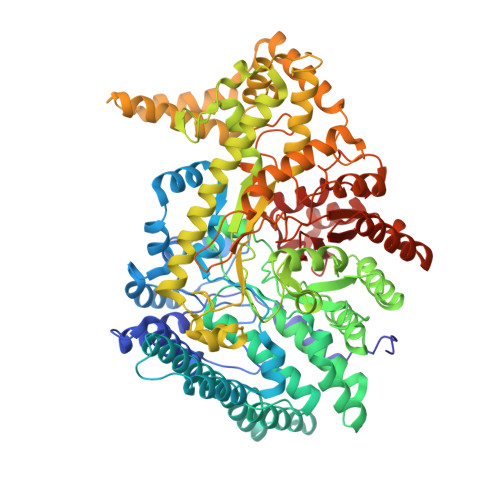1,2-Propanediol Dehydration in Roseburia inulinivorans: STRUCTURAL BASIS FOR SUBSTRATE AND ENANTIOMER SELECTIVITY.
LaMattina, J.W., Keul, N.D., Reitzer, P., Kapoor, S., Galzerani, F., Koch, D.J., Gouvea, I.E., Lanzilotta, W.N.(2016) J Biol Chem 291: 15515-15526
- PubMed: 27252380
- DOI: https://doi.org/10.1074/jbc.M116.721142
- Primary Citation of Related Structures:
5I2A, 5I2G - PubMed Abstract:
Glycyl radical enzymes (GREs) represent a diverse superfamily of enzymes that utilize a radical mechanism to catalyze difficult, but often essential, chemical reactions. In this work we present the first biochemical and structural data for a GRE-type diol dehydratase from the organism Roseburia inulinivorans (RiDD). Despite high sequence (48% identity) and structural similarity to the GRE-type glycerol dehydratase from Clostridium butyricum, we demonstrate that the RiDD is in fact a diol dehydratase. In addition, the RiDD will utilize both (S)-1,2-propanediol and (R)-1,2-propanediol as a substrate, with an observed preference for the S enantiomer. Based on the new structural information we developed and successfully tested a hypothesis that explains the functional differences we observe.
Organizational Affiliation:
From the Department of Biochemistry and Molecular Biology, University of Georgia, Athens, Georgia 30602 and.
















